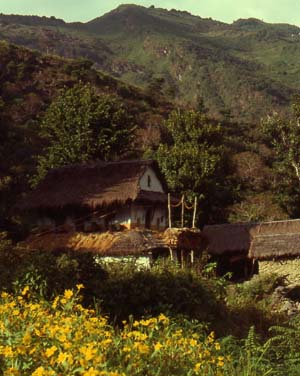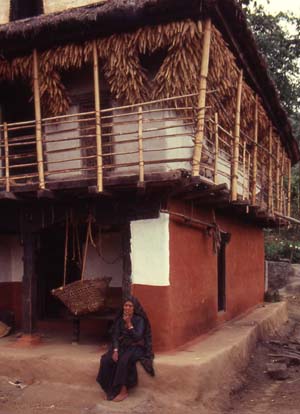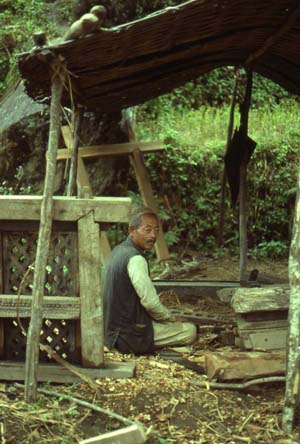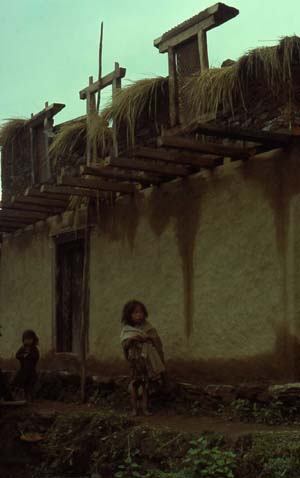Saving the Himalayas
For the devout Hindus and Buddhists the Himalayas are the abode of gods; others see them as a snow-white mountain range of pristine beauty. The Himalayas also serve as the life line for the people in India, China and other countries in the region because the glaciers there are the largest store of water after the polar ace caps, feeding seven major rivers—the Ganga, Brahmaputra, Indus, Mekong, Thamlwin, Yangtze and Yellow River.
But in recent years, the Himalayas, famous for the highest peak in the world (Everest), have also earned a dubious reputation: the highest garbage ground on planet Earth.
According to the WWF, the Himalayan glaciers are melting fast. As a result countries like India, China and Nepal could expect to live through a cycle of floods followed by drought—both sources of untold miseries to people in a vast region.
It is believed that the Himalayan glaciers are retreating at the rate of 10-15 metres (33-49 feet) a year. The Gangotri glacier, source for the Ganga, is receding at the rate of 23 metres (75 feet) a year. Environmentalists warn that by 2025, the temperature on Earth could rise by 2 degree Celsius above the pre-industrial era level: a signal for trouble.
A concerned United Nations is setting up a task force that will investigate effects of climate change on the Himalayan (and other similarly threatened) region.
Climate change in regions like the Himalayas poses danger to nature and national and cultural heritage. The governments of member countries of the UN will be reminded of their legal obligations to cut greenhouse gas emissions, though with the worldâ™s most powerful country taking a defiant attitude towards controlling gas emissions the success of the UN mandate may be doubted.
The international community, however, is greatly worried about preserving the ecology of the Himalayas. The Sagarmatah (Nepalese name for Everest) National Park in Nepal has been put on the world heritage danger list. The question of saving the Himalayas has become a matter of uttermost importance. And appropriately enough, some of the leading mountaineers, many of whom had made it to the highest peak in the world, are now actively associating themselves with save Himalayas campaign
The Himalayas also feature a fragile ecosystem. For centuries, this ecosystem has remained delicately balanced, and has been responsible for the tremendous biodiversity of the Himalayas.
Only in recent years has the ecosystem been disturbed in various parts due to processes both man-made and natural.
Man has also been responsible to a large extent for some of the environmental problems faced by the mountains. As he strives for industrialization, modernization and the so-called higher standard of living, man has disturbed the natural ecosystems of many parts of the world.
The Himalayas have been no exception. Over the centuries, pilgrims and explorers have visited the mountains. However, in the past their numbers were few and the Himalayan ecosystem, fragile as it is, was able to cope with the effects of human exploration in the areas.
But today, the story is different. In the last few decades, an intricate network of roads have been built into the mountains, which have made some of the most remote areas more easily accessible. This has translated into a tremendous increase in the numbers of people who visit the mountains every year.
The Himalayas are now being exploited, to the hilt in many areas, to provide materials for the growing number of forest-based industries. Thus, it is not a surprise that environmental problems have emerged in the Himalayan region.
 Sited conventionally amid dry cultivated fields, the yards of the Limbu houses may often be beautified by planted beds of colorful flowers. The houses are built of stone, mud packed, and characteristically washed with white and ochre mud. Typically, each Limbu house has the same type of front elevation. It is entered via a small porch, constructed like the balcony above it out of timber or bamboo. Designed with a small window above the balcony, the roof is of a gable type. Although in most instances the houses are roofed with thatch, the most prominent of the Limbus cover their houses with sun-baked shingles. For the most part, there is not much variation in the design, although here and there one may come across interesting horn-like tiles extending upwards from the ends of the gable triangle, a feature reminiscent of the Far Eastern architecture.
Sited conventionally amid dry cultivated fields, the yards of the Limbu houses may often be beautified by planted beds of colorful flowers. The houses are built of stone, mud packed, and characteristically washed with white and ochre mud. Typically, each Limbu house has the same type of front elevation. It is entered via a small porch, constructed like the balcony above it out of timber or bamboo. Designed with a small window above the balcony, the roof is of a gable type. Although in most instances the houses are roofed with thatch, the most prominent of the Limbus cover their houses with sun-baked shingles. For the most part, there is not much variation in the design, although here and there one may come across interesting horn-like tiles extending upwards from the ends of the gable triangle, a feature reminiscent of the Far Eastern architecture. The main living and sleeping area, including the kitchen hearth, is on the ground floor. Grain, seeds, tools, and different sorts of family valuables are ordinarily stored on the second floor. Cattle is kept in shelters built in the vicinity of the house.
The main living and sleeping area, including the kitchen hearth, is on the ground floor. Grain, seeds, tools, and different sorts of family valuables are ordinarily stored on the second floor. Cattle is kept in shelters built in the vicinity of the house. 











